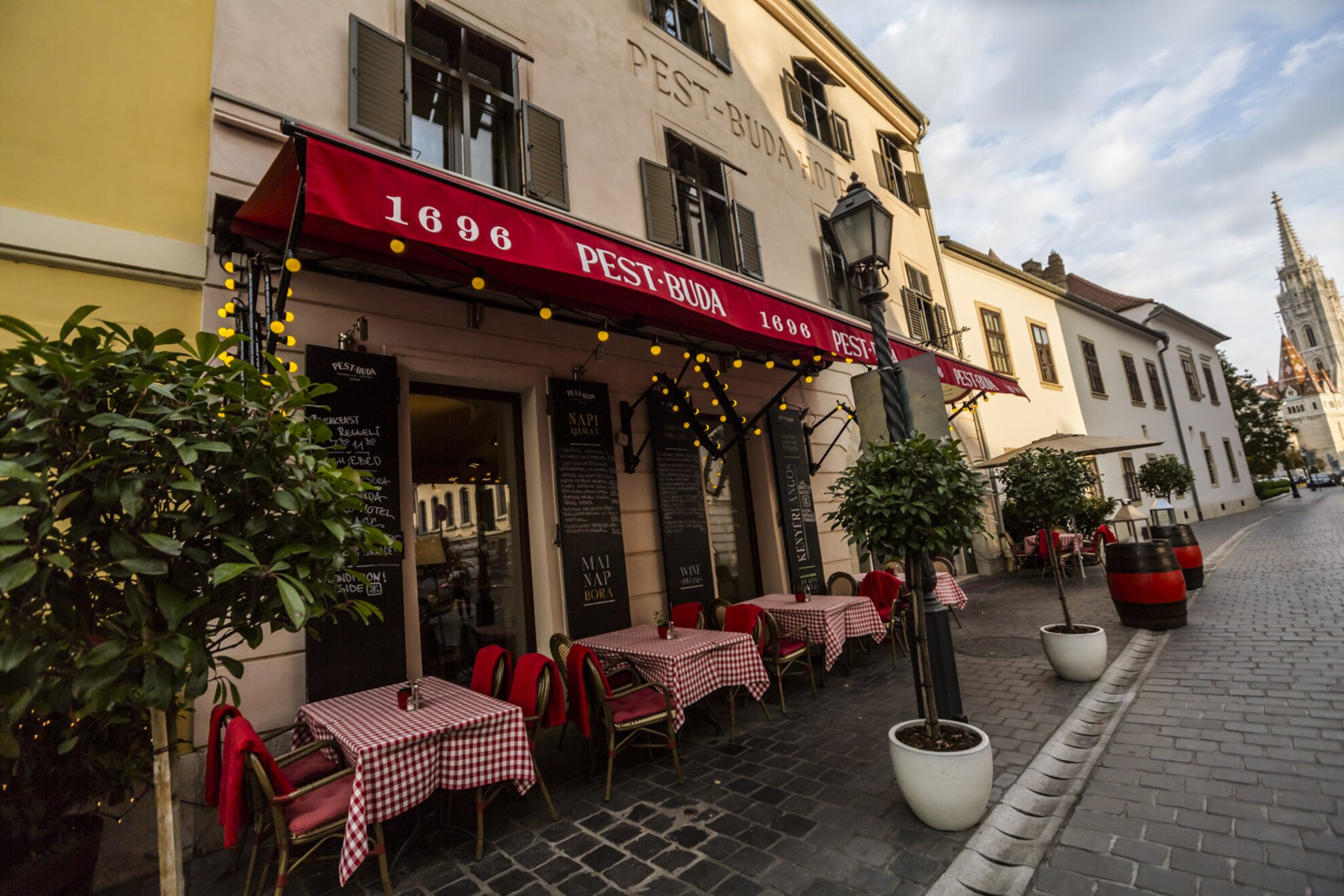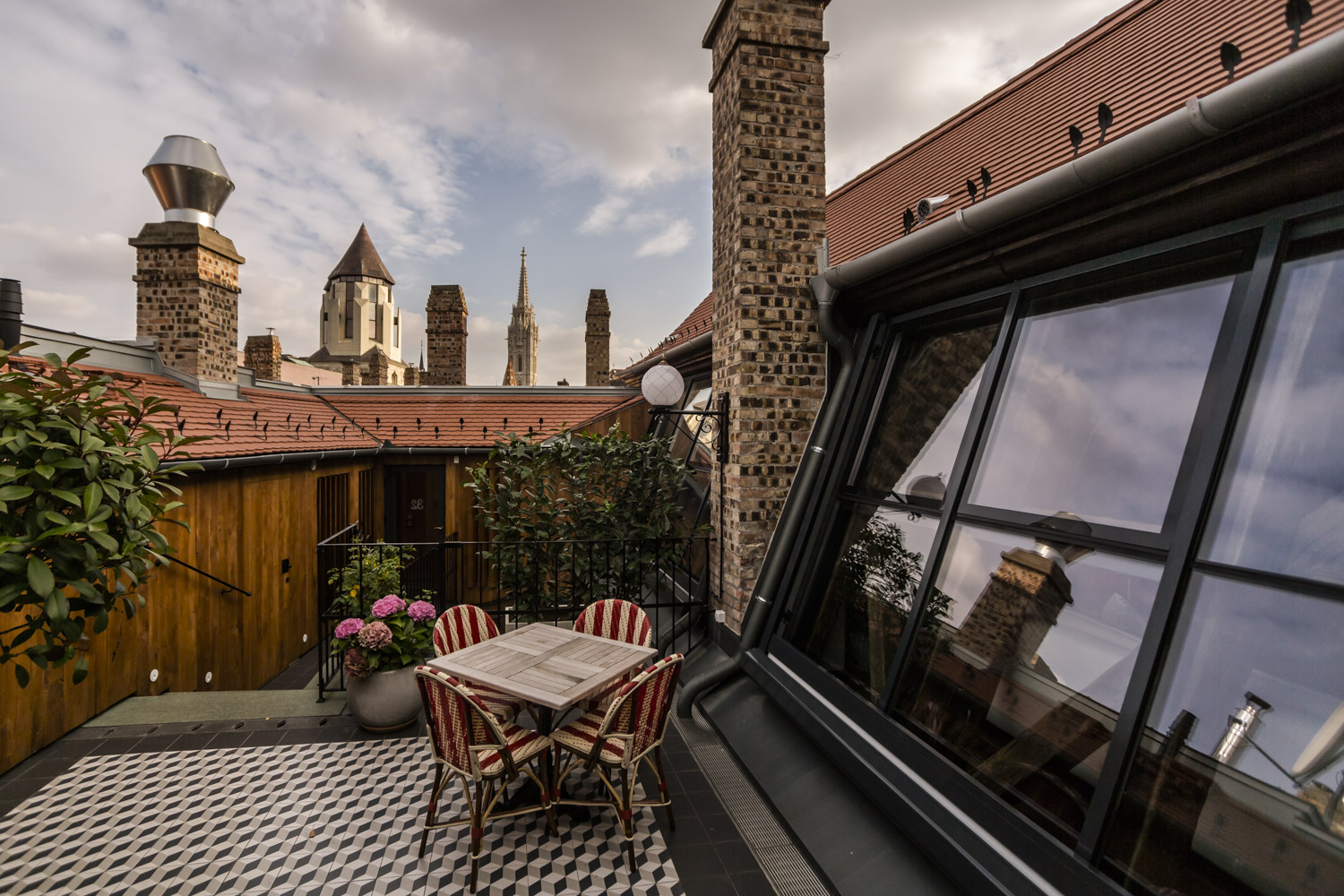The Pest-Buda Restaurant has been operating on Fortuna Street for more than 50 years now, although in recent years it was brought into the 21st century under the guidance of owner Roy Zsidai and chef Lajos Lutz. The building itself was builtat the end of the 17th century, on a substructure that remains from the Middle Ages. The inn opened in 1696 – but currently, the building houses the newest hotel of Budapest.

On the renovated façade, we can see the newly installed inscription of Pest-Buda, but we can also find more subtle details such as a metal flagpole, presumably forming a snake.

After entering through the semicircular front door, we find ourselves at the joint reception of the restaurant and the hotel. On the left side from here is the guest area, also suitable for serving breakfast to the hotel’s guests, and the lobby, located in the inner courtyard. The stairwell is located here, as well – since the building is under historic protection and is not spacious enough for housing elevators, we can only reach the upper floors from here.

The place has ten rooms of various sizes and types, but the chambers, decorated by interior designer Tibor Somlai, also bear several common features: rustic wood surfaces on the walls and the floors, old engravings, comfortable armchairs, unique brass lamps, and cool red refrigerators.

The image elements were realized by the concept of graphic designer Géza Ipacs, well known for his characteristic wine labels.

The Baroque roof structure of the street-side wing is also worthy of mentioning, extending above two of the hotel’s largest – and most expensive – ateliers.

The large wooden beams are clearly visible from outside as well, through the large glass surfaces overlooking the terrace.

Renovating the historical house, rebuilt countless times, proved to be an extremely difficult task for the architects, namely Bernadett Csorba Hild and her colleagues. However, the end result speaks for itself – we can only hope that many other storied buildings will join this wave of renovations in the area.




